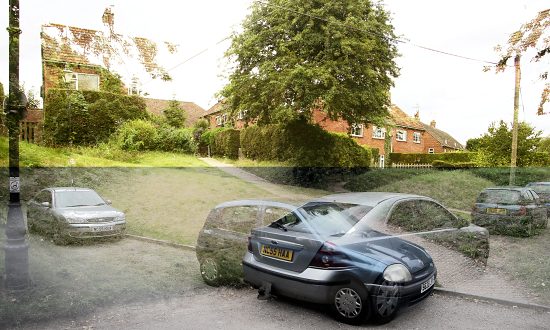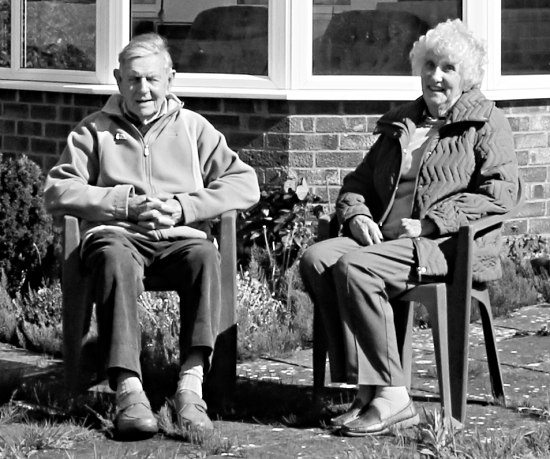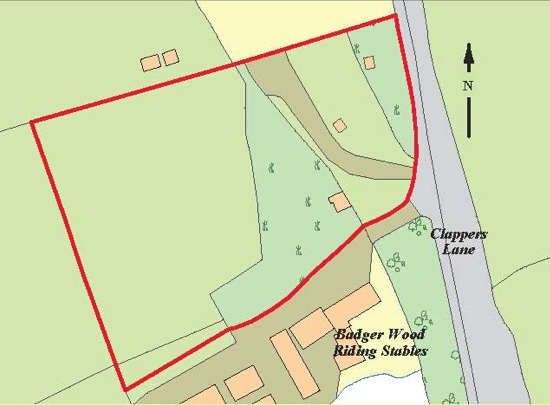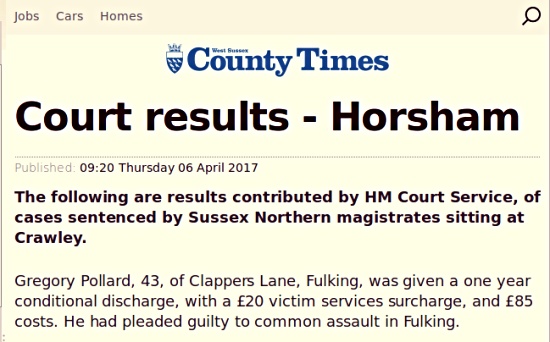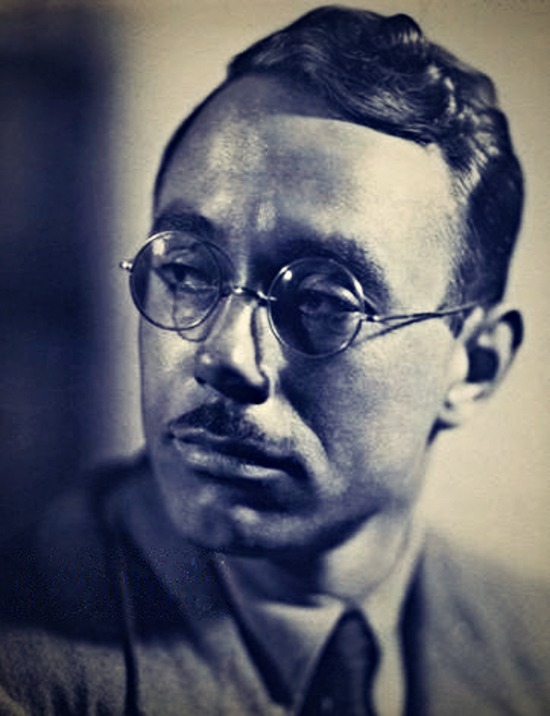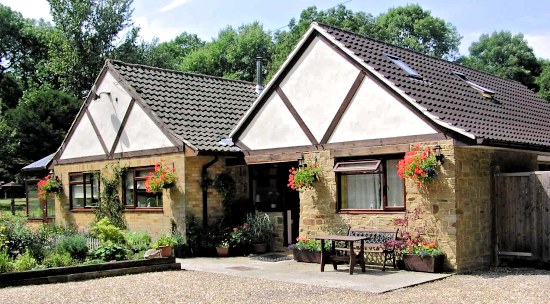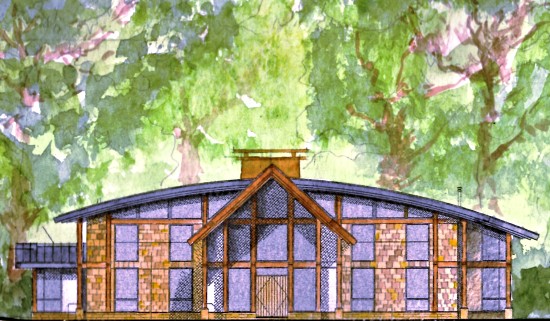Category Archives: Clappers Lane
Parish Council Meeting – 13th July 2017 7:30pm – Village Hall
Fulking Parish Council will hold their quarterly meeting at 7:30pm on Thursday July 13th 2017 in the Village Hall — agenda.
PARISH COUNCIL AGENDA
- Chairman’s Welcome.
- Apologies.
- Declarations of Interest.
- Approval of minutes of 6th March, 11th & 13th April, and 11th & 18th May, 2017
- Reports from MSDC Councillors & WSCC Councillor Joy Dennis
- Comments from the floor.
Matters arising from the above minutes not on the agenda: Ladybrook Spring maintenance update-Michael; Drainage along Edburton Road update-Michael; Hillside drainage-Miles; HGV sign update-Miles; Proposed parking measures West of Lady Brook Spring update-Mark; Preston Nomads entrance-Miles.
- Clappers Lane Update-Miles/Linda
- Operation Watershed update-Derek
- Transparency update-Derek
- Proposed annual review of procedures-Derek
- NTF insurance update-Miles
- Playground inspection/maintenance update-Derek
- Proposed 2018 meeting dates approval; 11th January, 12th April, 12th July, 11th October, AGM 3rd May-all
- Financial Matters (including Cheque List & Stubbs, Income & Expenditure to date, Budget v’s actual, quarterly bank reconciliation.
- Date of next meeting: 12th October, 2017.
Members of the Press and Public are welcome to attend.
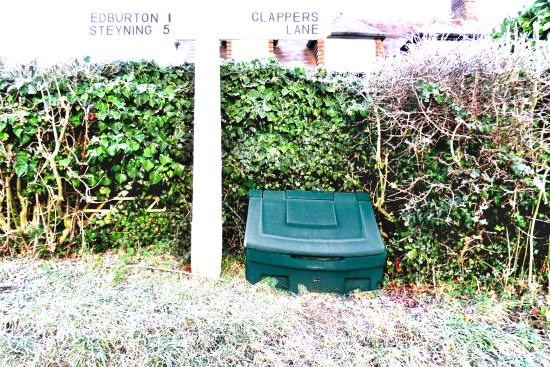
Parking in Clappers Lane
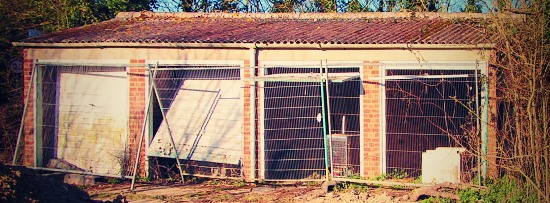
Residents of Clappers Lane will hold a meeting in the Village Hall on Friday 7th July at 7.30pm to discuss parking at the southern end of Clappers Lane. All villagers are welcome to attend and contribute to the discussion. The aim of the meeting is to look for solutions to ease parking for those without off-road parking — specifically residents between 5 and 27 Clappers Lane.
Most of us are aware of a number of recent incidents because of too many cars parked along a very narrow stretch of Clappers Lane and very large vehicles travelling regularly along the lane causing obstructions and accidents. It has also had a knock-on effect for parking in The Street.
Do come along with comments and suggestions. If you can’t attend and want to contribute your ideas, please email Linda Dyos at linda.dyos@fulking.plus.com or pop a note through her letterbox at number 11 in advance of the meeting.
Miles Firth and Linda Dyos
Bobservation No. 32: Farewell to Tony and Doris
Tony and Doris Brooks came to Fulking to live at Hillbrook in 1970 and built the existing bungalow themselves in 1975.They then successfully ran Hillbrook Nursery until 1998 when they retired.
In the 47 years they lived in Fulking they have been stalwarts of all village activity and will be much missed. Tony has been a councillor and chairman of the parish council as well as one of the driving forces of the Social Committee. His authorship of the two volumes of The Changing Times of Fulking and Edburton which he published in 2007 & 2015 is an historical gem so far as the village is concerned and remains the important source of village information. Incidentally the proceeds of the sale of this work were, most generously, donated to the St Andrews church restoration fund.
Personally, I have been fortunate to come into contact with Tony over village matters many times and his honest and direct approach has been a great asset. I regret to say that their departure virtually brings to the end the era of a particularly dedicated type of villager, many of the recent arrivals to the village do not seem to me to be as interested or committed to Fulking.
Please join me in wishing Tony and Doris much happiness in their new home in Hassocks. We shall miss them.
Call My Bluff

Call my Bluff wine quiz in the marquee in the North Town Field on the evening of Friday 28th July, 7:00 for 7:30pm. Free parking. Tables of eight participants at £15 per person to include superior wines and very tasty finger food. Prize for winning table. Contact Bob Rowland on 271 to reserve a table. Early booking essential to avoid disappointment.
Bobservation No. 29 – Spring at Furzefield

We have lived at Furzefield in Clappers Lane for 24 years and every year, as Spring approaches, it is a delight to see Crocus, Daffodil, Primrose and Snowdrop appearing.
Apart from the annual display of bluebells we have had the pleasure of living with many species of tree, including Oak, Hazel, Field Maple, Scots Pine, Spindle, Holly, Ash, Yew, Silver and Copper Birch.
The wild life has been extensive: mammals include Badger, Roe Deer, Grey Squirrel, Stoat, Weasel, Rabbit, Harvest and Field Mouse, Pigmy and Common Shrew, Bank Vole, Pipistrelle, Noctule and Serotine Bat. We have Common Lizard, Toad and Frog, Smooth Newt, Grass Snake, Glow-worm and Slowworm. Butterflies have numbered 27 different types including Purple Hairstreak and Clouded Yellow. Dragonflies are numerous.
Wild flora, as well as those already mentioned, Foxglove, Greater Stitchwort, Red Campion, Wood Anemone and Violet. One of the biggest attractions has been the birdlife, some 80 different species; the star turns being single sightings of Wryneck, Lesser Spotted Woodpecker and Kingfisher. I should add the Hummingbird Hawk Moths.
It has been our aim to preserve the wildlife and manage the flora and although this means quite a lot of effort, the results have been very rewarding. The badgers are always entertaining and there are good views most evenings, particularly as the days lengthen.
As for the bluebells, some years are better than others, 2016 being particularly good but even in a bad year the display and scent are pretty impressive. It has been our pleasure to have villagers, their families and friends wander around at bluebell time, usually end of April and beginning of May.
Harold Manhood at Oldwood
Oldwood is the south west corner plot at the junction of Clappers Lane and Holmbush Lane. Originally part of a large apple orchard, it was the third of the five-acre plots bought by the architect Ernest Black. In 1912 there was an attractive cottage on the site, but this burnt down in 1933. Charles Clayton was Black’s partner in their architectural practice and it was one of Clayton’s daughters who produced the sketch of the cottage reproduced above.
Ernest Black sold the property to an American who used it as a holiday retreat. It was purchased next by Harold Alfred Manhood (1904–1991).
The editor of a recently published collection of Manhood’s short stories writes as follows:
H. A. Manhood was one of the most highly regarded short story writers of the 1930s. His work was praised by John Galsworthy, Henry Williamson, Hugh Walpole and H. E. Bates, who was to become a good friend. His British and American publishers, Jonathan Cape and Viking respectively, thought so highly of him that they paid him a salary to give him the time and space just to write, a most unusual arrangement which demonstrated their respect for his work. His stories were in demand both from popular papers such as the Evening News and John O’London’s Weekly, and from more literary periodicals such as the London Mercury and the Adelphi. They were included in annual ‘best short story’ anthologies and in retrospectives of the masterpieces of English Literature.
Manhood gave it all up at the height of his success and disappeared into the Sussex countryside to live in a railway carriage .. . Writer and auctioneer Frank Herrmann .. said after the war he began to resent growing editorial interference with his writing and was appalled by the tiny payments he received for his output. So in 1953 he stopped writing, bought more land, started brewing cider and never wrote another word. Shortly before his death aged 87, Manhood sold his life’s work to the British Library. [Mark Valentine]
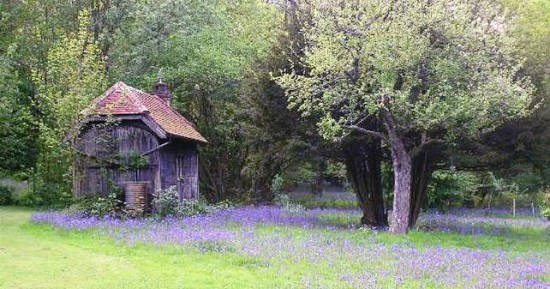
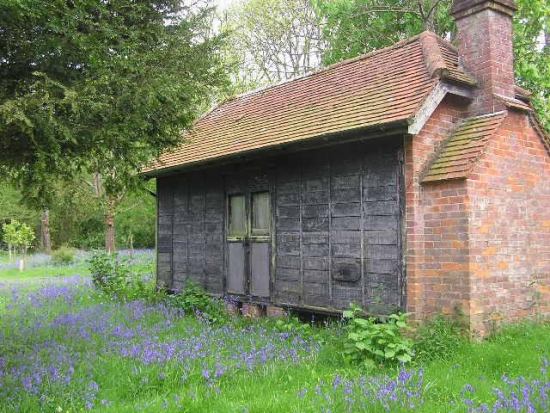
Oldwood became known as Manhoods. Harold Manhood originally lived there in old railway carriage (no longer on the site) and a small barn-like building which is still there today. This building, standing in an orchard as it does, may originally have been designed for apple storage. Later he had a bungalow with a garage built on the site. He was well known for the home brewed cider he produced from apples off the old trees in the grounds and it was not unknown for local lads to stop at his place for a drink before setting off for a night out in Henfield. He was also a regular customer at Springs Smoked Salmon and always insisted on choosing his own fish from the freezer room, a lengthy (and almost certainly chilly) process that occasionally involved inspecting up to 200 fish before he made his selection.
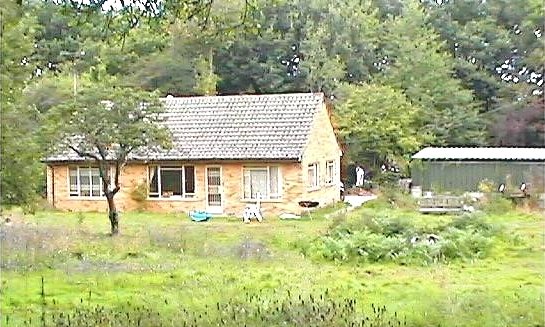
 Villagers recall that H.E. Bates (1905-1974) and Harold Manhood became great friends and it is thought that Bates wrote The Darling Buds of May (later to become a successful TV series) while staying with Manhood in the late 1950s.
Villagers recall that H.E. Bates (1905-1974) and Harold Manhood became great friends and it is thought that Bates wrote The Darling Buds of May (later to become a successful TV series) while staying with Manhood in the late 1950s.
Bates had reviewed some of Manhood’s books in the 1930s and was to become an enthusiast as well as a friend. However, in 1932, we find him writing:
Mr. Manhood writes like a Cockney in the country for half a day, very high-spirited, slick and robust, intoxicated into a kind of rollicking ecstasy of admiration of its beasts, fields, and wenches, but without either depth of understanding or authentic feeling. There is something counterfeit about more than half these stories; they look like gold but they ring so often like brass. [Review of Apples by Night in John O’London’s Weekly, October 29th, 1932, page 182.]
But, only a few years later, Bates had come to appreciate all of Manhood’s work and was to dedicate one of his own collections of stories (Something Short and Sweet) to him in 1937. Reviewing a later Manhood collection in 1939, Bates is wholly positive:
There can be no doubt of his calibre. He is almost too rich a writer, as the thirty stories in Sunday Bugles prove, for an age which exalts aridity. He is a cornucopia to an era growing too accustomed to drinking out of paper cups. To all who care for robust, full-coloured, originally flavoured writing, Sunday Bugles must therefore be warmly recommended. [Review of Sunday Bugles in John O’London’s Weekly, February 10th, 1939.]
And, in another review of the same collection, Bates has this to say:
Mr. Manhood is a poet forced by his own time and circumstances to write in prose. This could be said of a dozen other short story writers of to-day, but it seems pointedly true of Manhood, who treats the writing of prose as a tortured process of distillation or, more aptly, as the evolution of a pattern in verbal mosaic. All who know him are aware of the tortures that prose inflicts on him; those who know only his stories must be aware that deep embryonic struggles precede the birth of his beautifully plumaged sentences.
His work is consistent in its rare oddity and flamboyance, its prolific use of startling metaphor and violent climax, his method of using the fantastic to illustrate the ordinary, the ordinary to illustrate the fantastic. His stories are so full of the kind of conceits that embroider the work of seventeenth-century poets that I feel he would have been happier in an age where the rich uses of imagination were not looked on with suspicion. He sports rather too fine a doublet in this age of pin-stripes and umbrellas. [Review of Sunday Bugles in Now and Then 62, pages 39-40, Spring 1939.]
On Harold Manhood’s death in 1991, the property was sold to a retired farmer who added a barn to store his collection of old, working, farm machinery. It was then sold on to a waste haulage operator who constructed an extensive hardstanding for lorries on the land and explored the possibility of obtaining permission to erect a mobile phone mast on the site. After about a year, it was sold again to the former owner of the caravan park in Bramlands Lane. He took up residence and transformed the appearance of the bungalow by integrating the garage into the house. The grounds were also landscaped at this time.
Tony Brooks [with literary interpolations by GJMG]
References:
- Paul Machlis (2017) H.E. Bates Companion (website).
- H.A. Manhood (2017) Life, Be Still! And Other Stories, with an introduction by Mark Valentine. Sherborne: The Sundial Press.
[Copyright © 2017, Anthony R. Brooks. Adapted from Anthony R. Brooks (2008) The Changing Times of Fulking & Edburton. Chichester: RPM Print & Design, page 71-72.]
Currently popular local history posts:
On the market
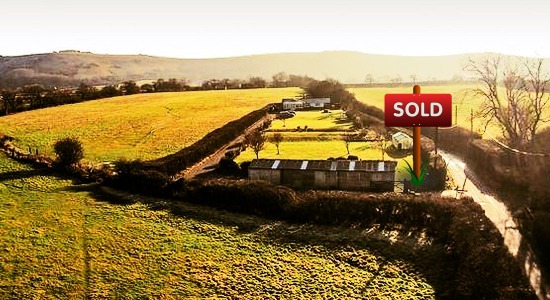
Hillbrook was originally a one acre plot known as ‘Shady Acre’ and was part of Brookside Nurseries in the 1920-1950 period. The nurseries were sold in 1953 and one of the employees purchased Shady Acre. It was then sold to the present owners in 1965. Glasshouses were built in 1970 and the owners then lived on the property in a mobile home for 5 years until they obtained planning permission to build the bungalow that stands on the site today. It was developed and run as a successful plant nursery, until 1998 when the owners retired. Since then the glasshouses have been removed and the site has been re-landscaped to form a large garden.
[Adapted from Anthony R. Brooks (2008) The Changing Times of Fulking & Edburton. Chichester: RPM Print & Design, pages 85-86.]

